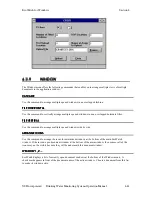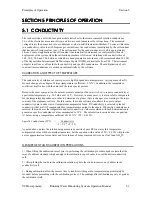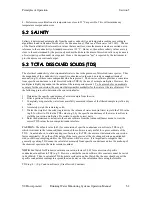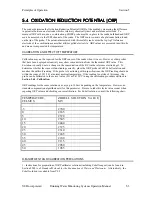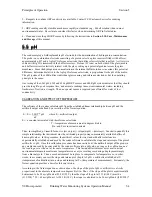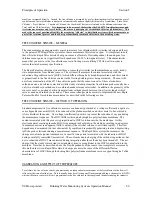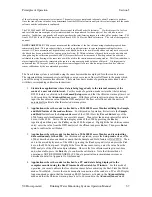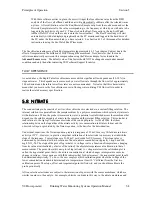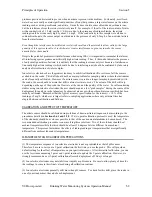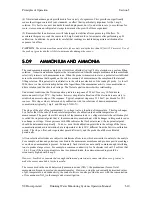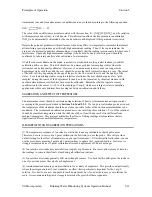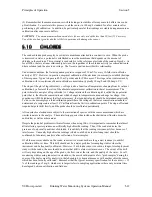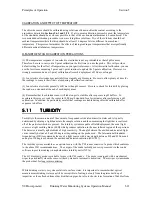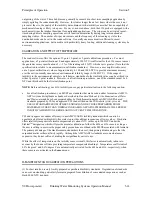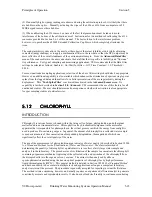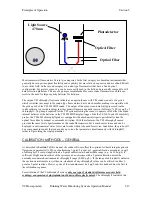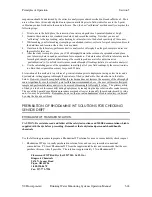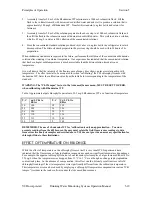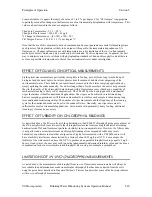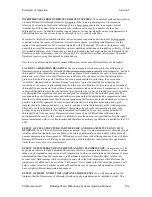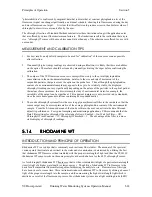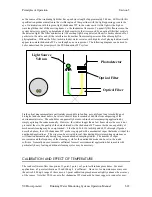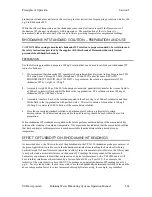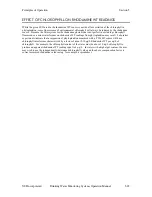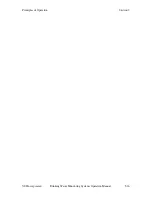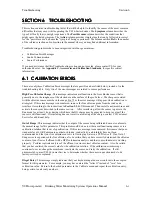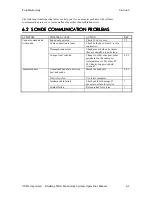
Principles of Operation
Section 5
YSI Incorporated Drinking Water Monitoring Systems Operation Manual
5-13
CALIBRATION AND EFFECT OF TEMPERATURE
The chloride sensor should be calibrated using solutions of known chloride content according to the
procedures detailed in
Sections 2.6.1 and 2.9.2
. If a two point calibration protocol is used, the temperature
of the standards should be as close as possible to that of the environmental medium to be monitored. The
recommended calibration procedure is one involving three solutions. Two of the solutions should be at
ambient temperature while the third should be at least 10 degrees Celsius different from ambient
temperature. This protocol minimizes the effects of taking readings at temperatures that are significantly
different ambient laboratory temperatures.
MEASUREMENT AND CALIBRATION PRECAUTIONS
(1) The temperature response of ion selective electrodes is not as predictable as that of pH sensors.
Therefore, be sure to carry out a 3-point calibration the first time you use the probe. This will provide a
default setting for the effect of temperature on your particular sensor. After this initial calibration, you can
use the less time-consuming 2 point and 1-point routines to update the 3-point calibration. However, we
strongly recommend a new 3-point calibration after each deployment of 30 days or longer.
(2) Ion selective electrodes may not stabilize as rapidly as pH sensors. Be sure to allow plenty of time for
the readings to come to their final values during all calibration routines.
(3) Ion selective electrodes generally drift more than pH sensors. Be sure to check for this drift by placing
the sonde in a standard at the end of each deployment.
(4) Remember that the chloride sensor will take longer to stabilize after exposure to pH buffers. To
accelerate this process, soak the sensor in 1000 mg/L standard for a few minutes after performing a pH
calibration. In addition, be particularly careful that readings are stable during chloride calibration after
exposure to buffers.
5.11
5.11
5.11
5.11 TURBIDITY
TURBIDITY
TURBIDITY
TURBIDITY
Turbidity is the measurement of the content of suspended solids (cloudiness) in water and is typically
determined by shining a light beam into the sample solution and then measuring the light that is scattered
off of the particles which are present. For turbidity systems capable of field deployment, the usual light
source is a light emitting diode (LED) which produces radiation in the near infrared region of the spectrum.
The detector is usually a photodiode of high sensitivity. The angle between the emitted and detected light
varies (usually between 90 and 180 degrees) depending on the probe used. The International Standards
Organization (ISO) recommends the use of a light source with a wavelength between 830 and 890 nm and
an angle of 90 degrees between the emitted and detected radiation (ISO 7027).
The turbidity system available as an option for use with the YSI sondes consists of a probe which conforms
to the above ISO recommendations. The output of the sonde turbidity sensor is processed via the sonde
software to provide readings in nephelometric turbidity units (NTUs).
The 6136 turbidity probe is available for use with YSI sondes. The probe is equipped with a mechanical
wiper to periodically clean the sensor either by manual or automatic activation. These wiper systems make
the probe ideal for long term monitoring,
While drinking water is very clean relative to surface water, it is important to remember that optical
measurements drinking water can still be susceptible to fouling, not only from long term build up of
impurities or those flushed from older distribution pipes, but also to shorter term formation of bubbles from

